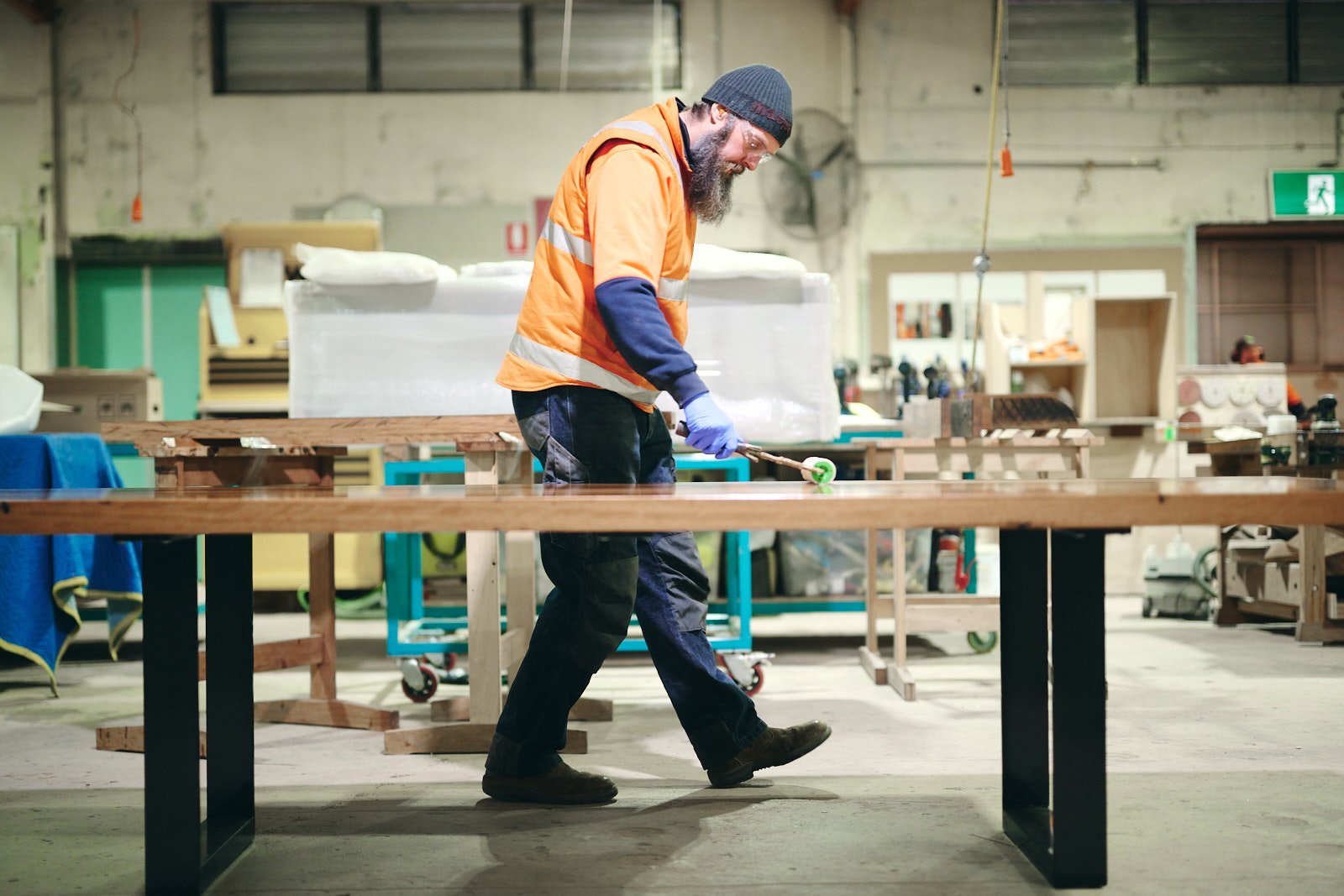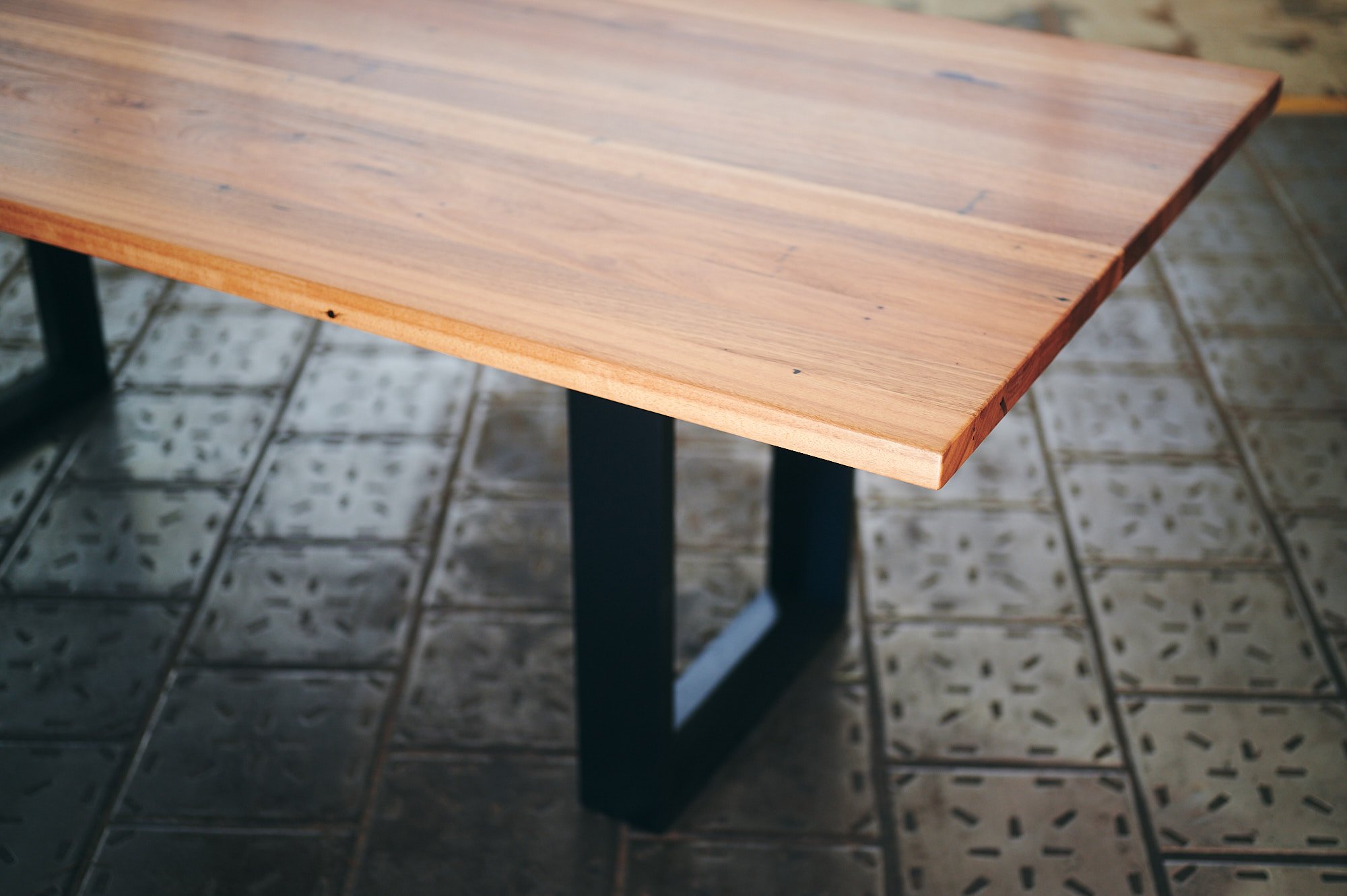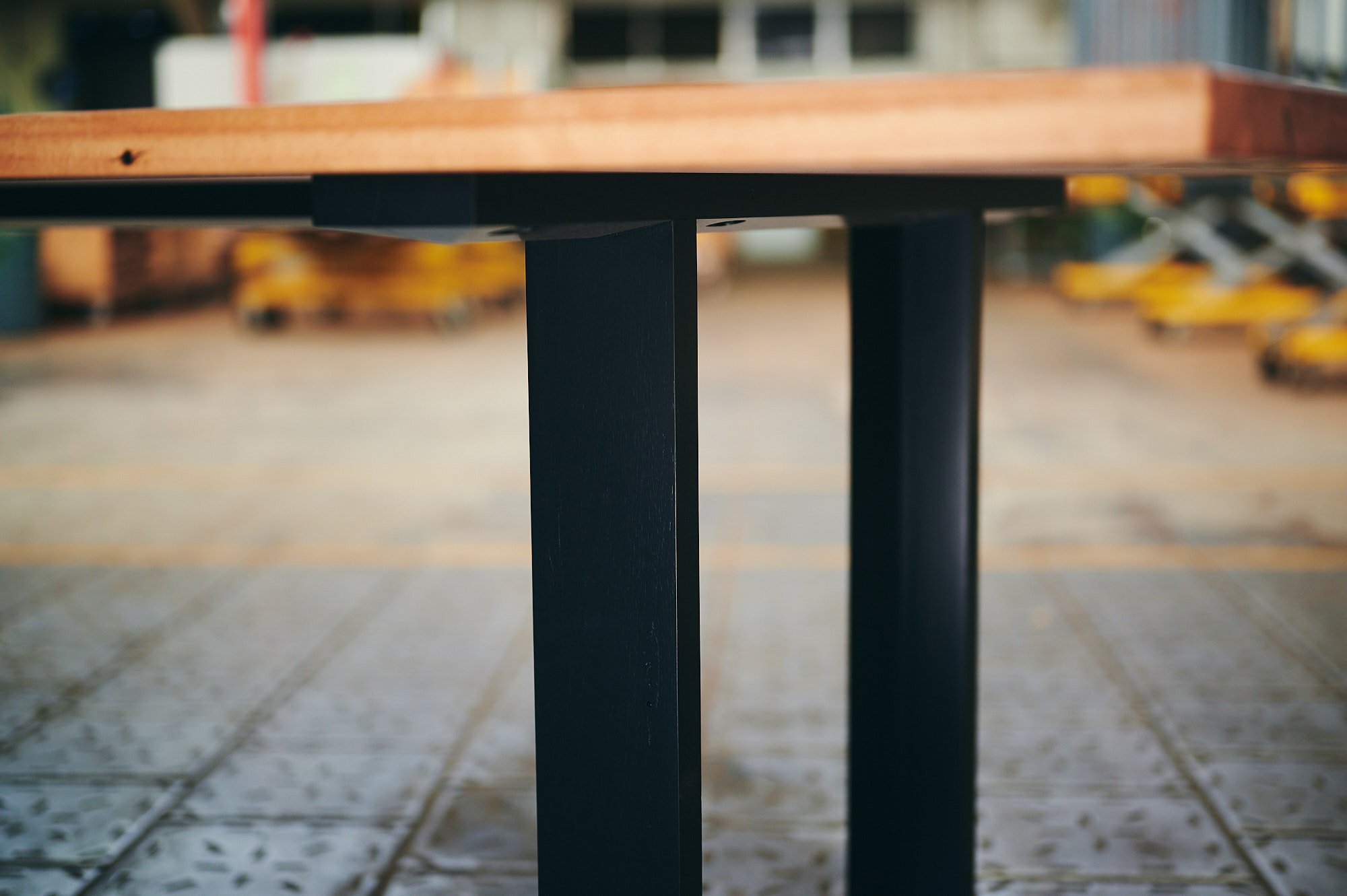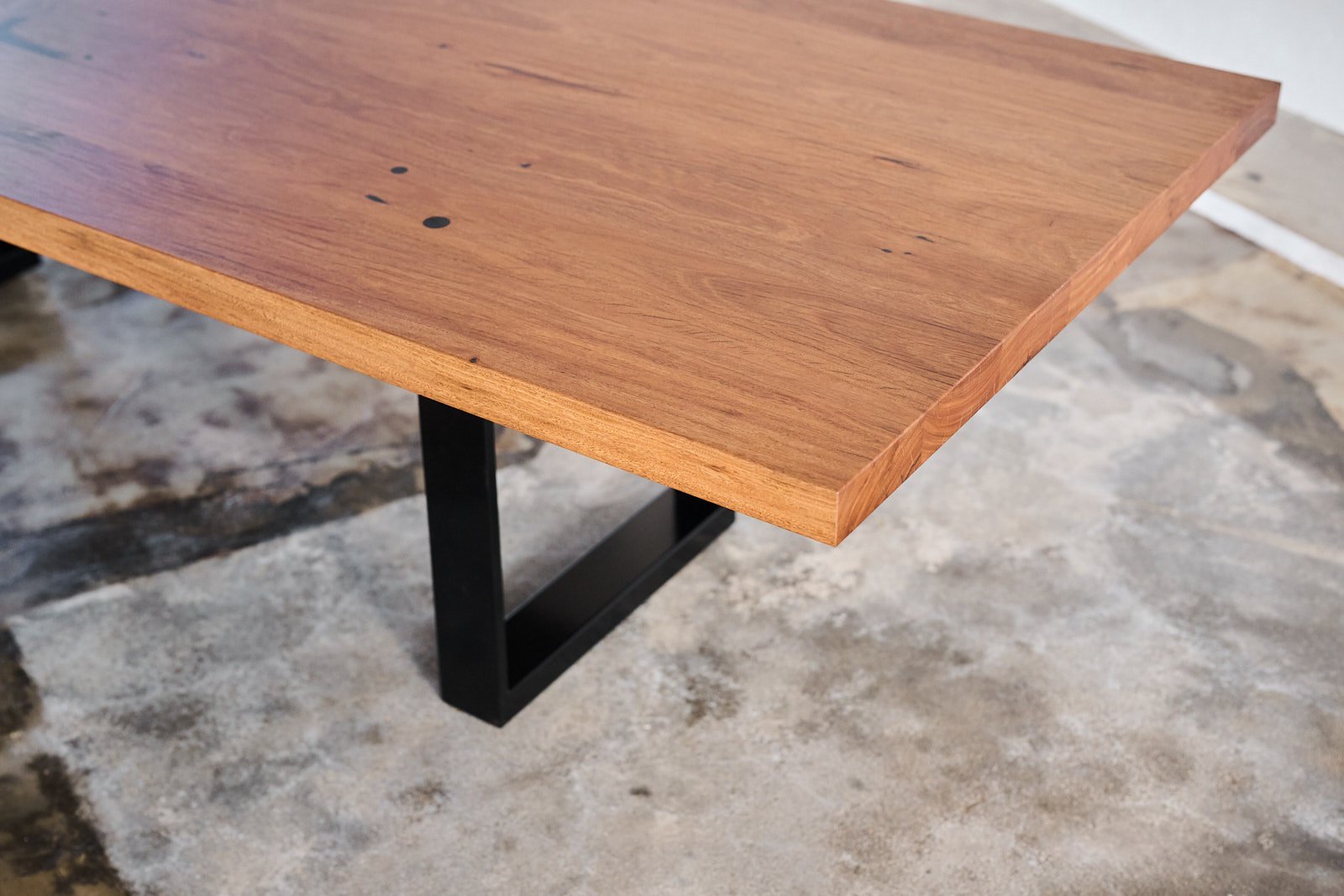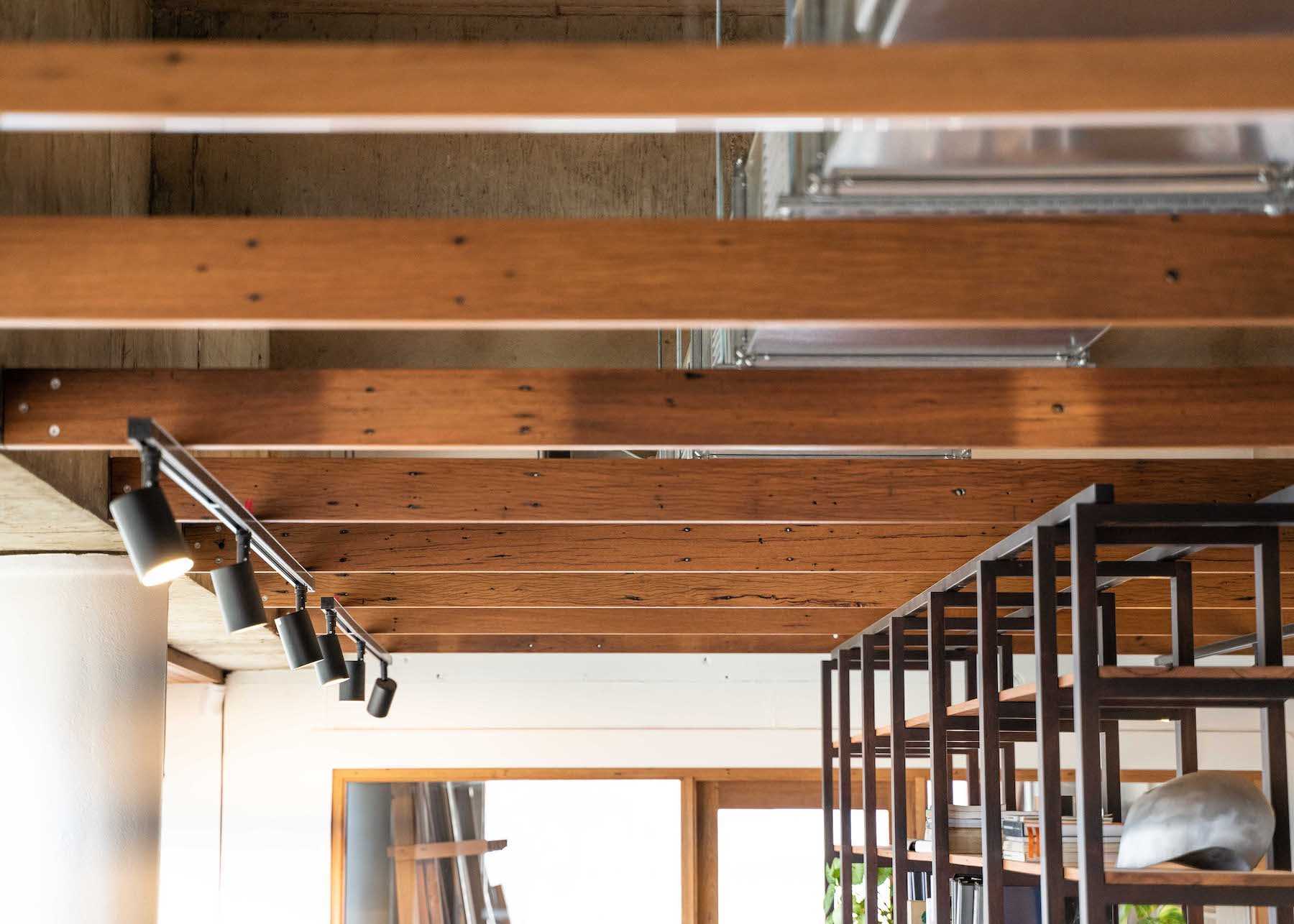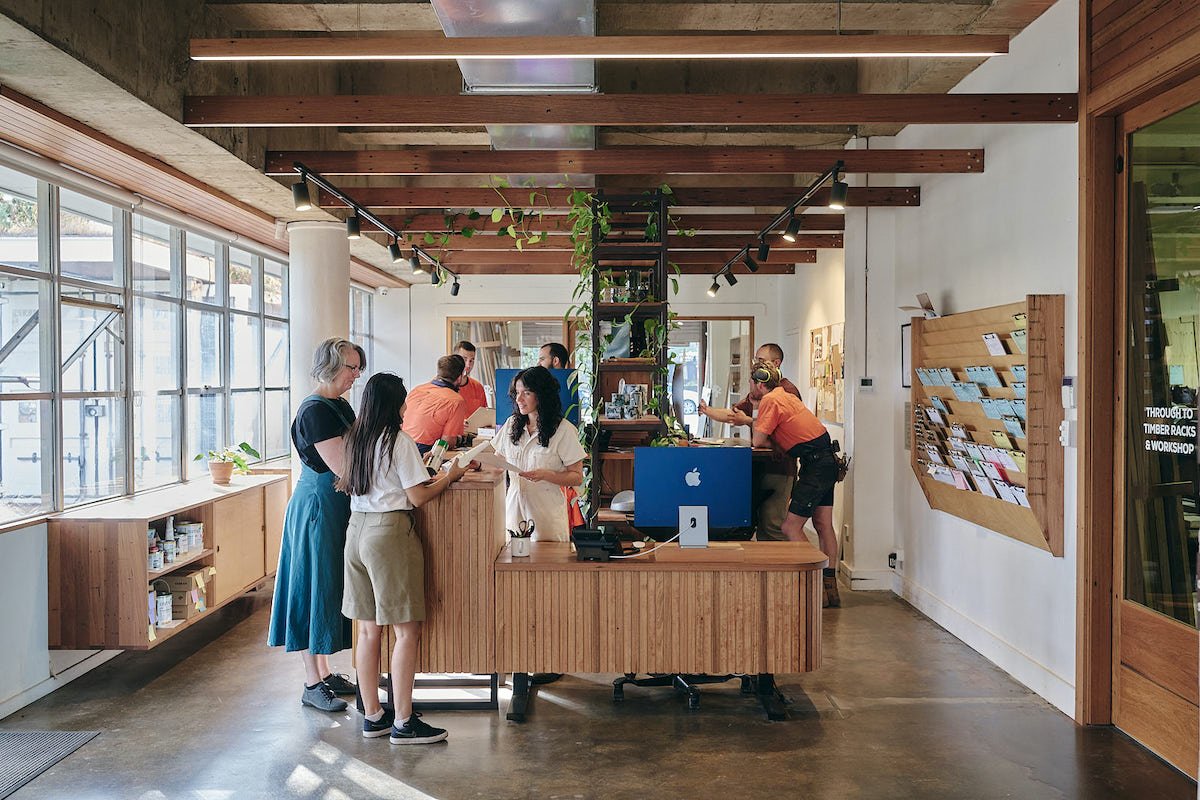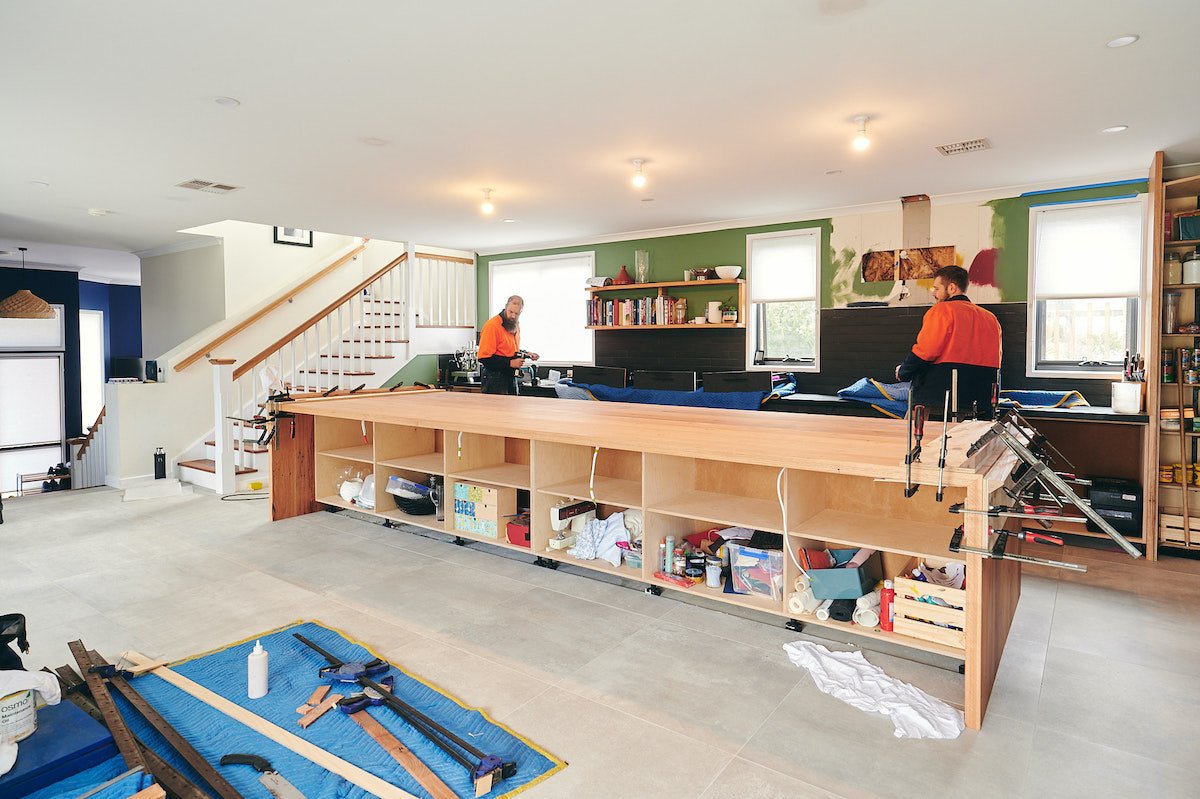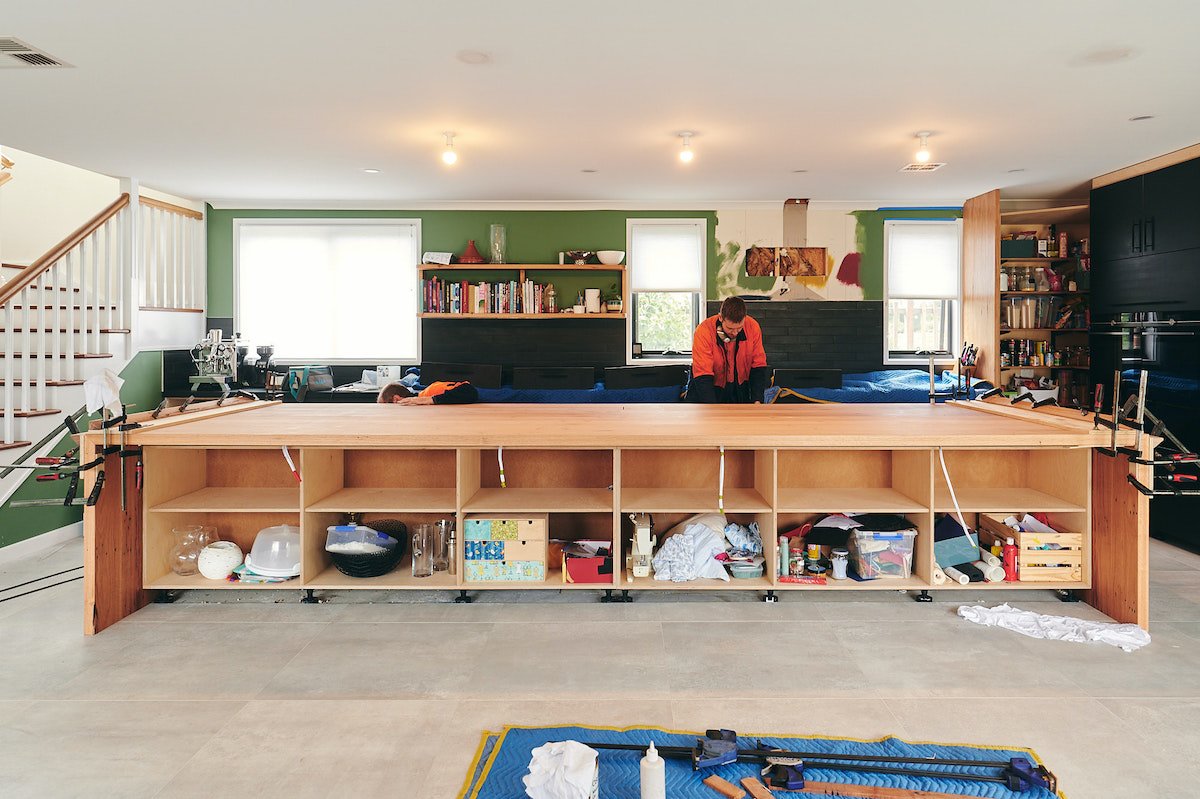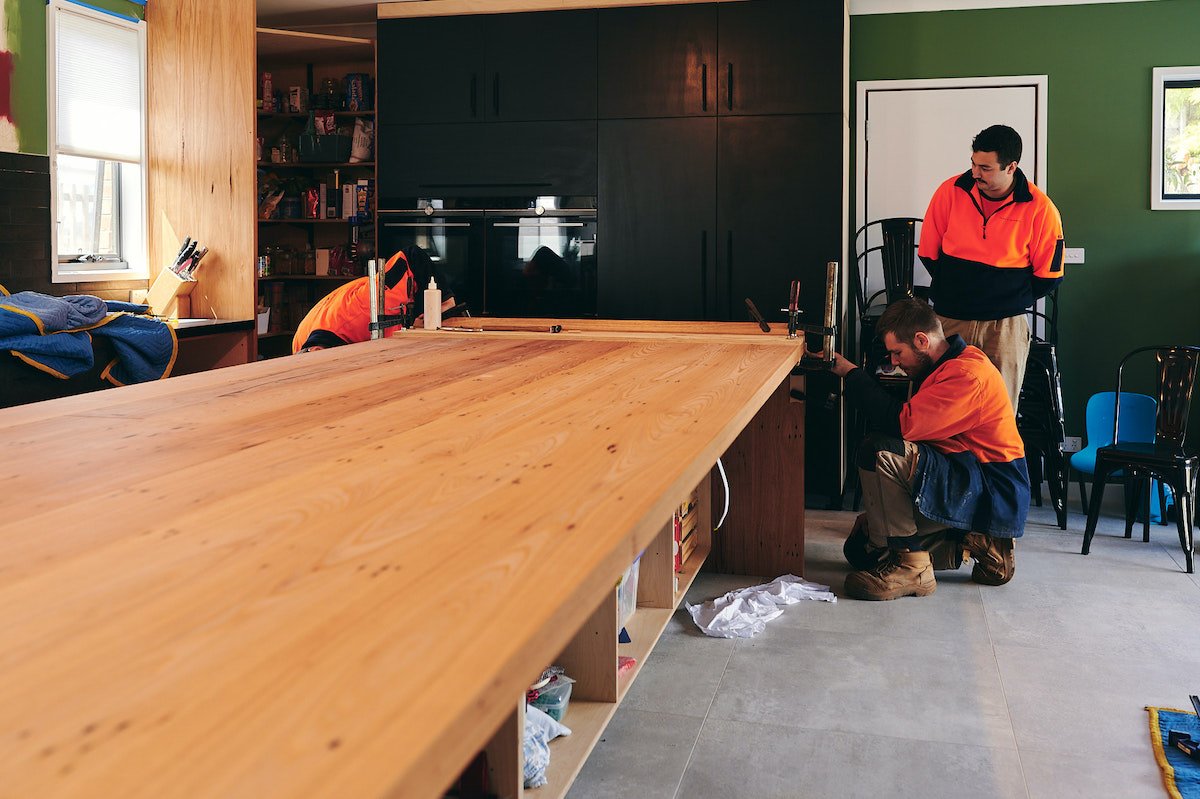New Historic Demolition Timbers // 1920s Industrial Shed in Port Kembla
July 2023
Thor and our Recycling Manager Matt recently headed down to Port Kembla—a coastal town just south of Wollongong—to check out a massive 1920s industrial shed that was due for demolition.
Inside, they found a treasure trove of beautiful pieces of blackbutt, tallowwood, spotted gum and oregon, in long lengths and excellently seasoned over nearly a century.
This shed stood tall for a one hundred years, and contributed significantly to the industrial and economic development of the region, so it’s a great little piece of history that Thor’s Hammer customers will be able to bring to their new piece of furniture or joinery, or perhaps their pergola or feature beams.
Read on to learn a bit of the history behind this shed, and about the range of furniture and architectural products the timber is destined to become now it’s in our lumber yard!
This historic timber is available at Thor’s Hammer now.
It’s strong, rustic and incredibly interesting, and ideal for anything from our Steel Hoop Leg Tables, to exposed ceiling beams, or large waterfall island benchtops, and much more.
Call us on 6282 9900 to enquire, or email hammer@thors.com.au or fill out an enquiry form via the button below.
Read on to discover more about the history of these unique timbers sourced from this historical 1920s Port Kembla storage shed.
CONTENTS
(Click the links below to jump to the section you’re interested in)
Port Kembla Shed—An Unexpected History
In the early 1900s, NSW’s Illawarra region experienced a surge of progress and development, and Port Kembla was no exception. This was due largely to the establishment of the Port Kembla Copper smelter by The Electrolytic Refining and Smelting Company of Australia Ltd (ER&S) in 1905, which brought employment and interest to the region.
A decade or so later, saw ER&S build a plant to enable them to manufacture sulphuric acid to be used in their refining processes, and superphosphate, an agricultural fertiliser.
The shed from which we salvaged this timber was a storage shed for the superphospate they were producing. The hardwood timber used for construction was transported to Port Kembla on a ship called the ‘Bodalla,’ which at the time ran a regular route from the south coast between Nowra and Sydney.
The Timbers We Salvaged—Blackbutt, Tallowwood, Spotted Gum & Oregon
Thor and Matt were impressed by the timber they found in the shed, with a range of beautiful Australian hardwood species, all in extremely good condition, including blackbutt, tallowwood and even a lot of spotted gum (very unusual), and also fine grained old growth oregon which must have been imported from the USA or Canada.
The pieces of timber were large structural components that supported the roofing structure of the shed by sitting between the big steel frames, called ‘purlins’. They are nice and long, measuring from 5.5 to 5.8 metres.
The timbers aren’t just long though, they are also 200 - 250mm wide and 75mm thick, which gives huge scope for the furniture and joinery pieces we could make.
The timber was also really dry and well seasoned, having been completely protected for over 100 years. This is one of the main advantages of using recycled timber in fact, as it means that the timber is more stable (amongst many other reasons). You simply can’t get seasoned new hardwood thicker than 50mm, because it would take too long in a kiln!
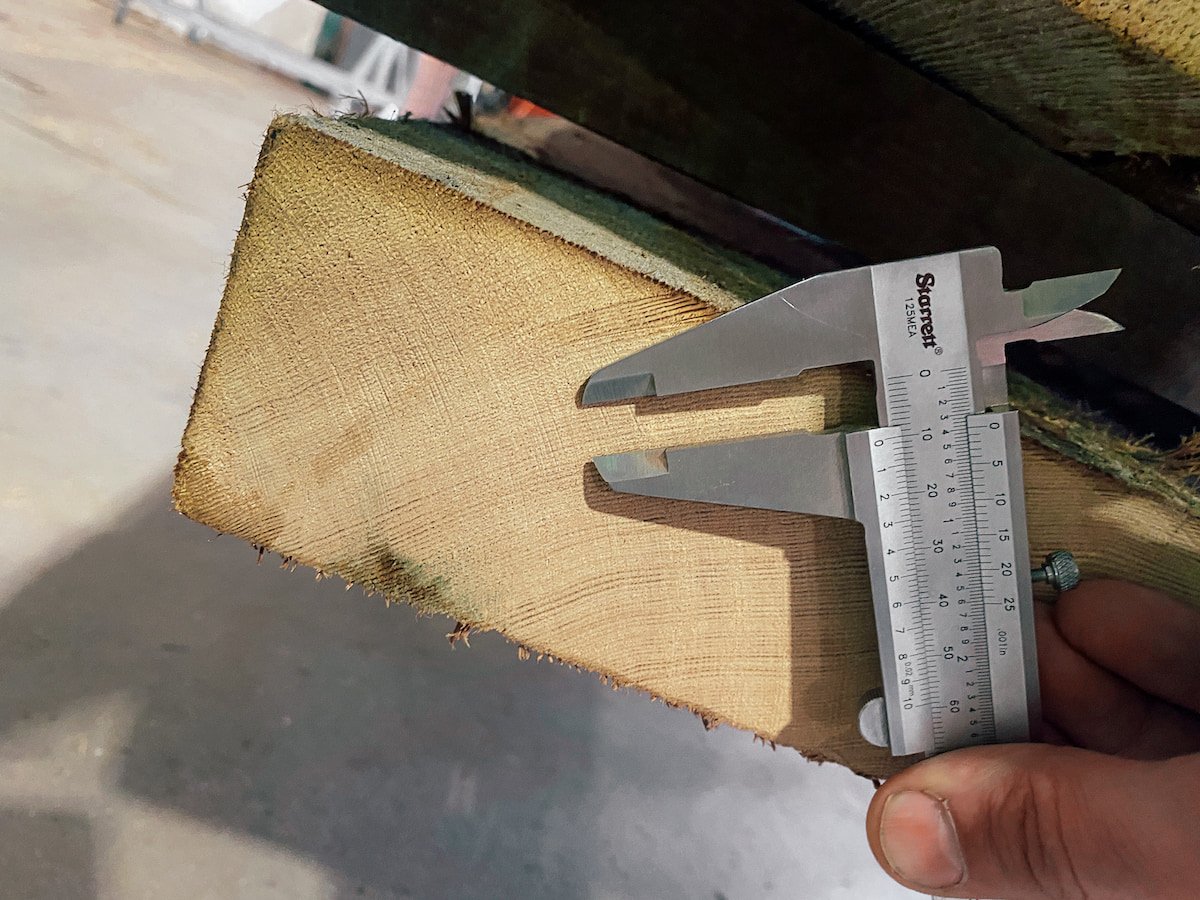
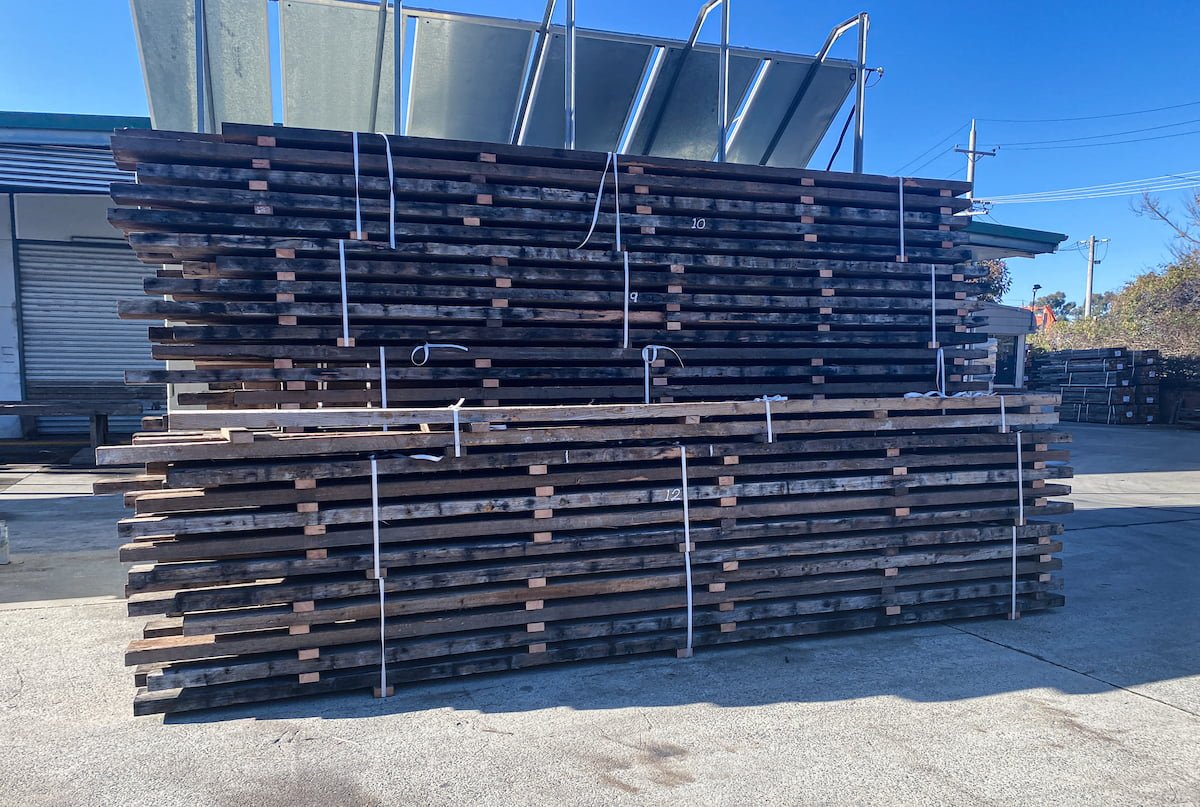
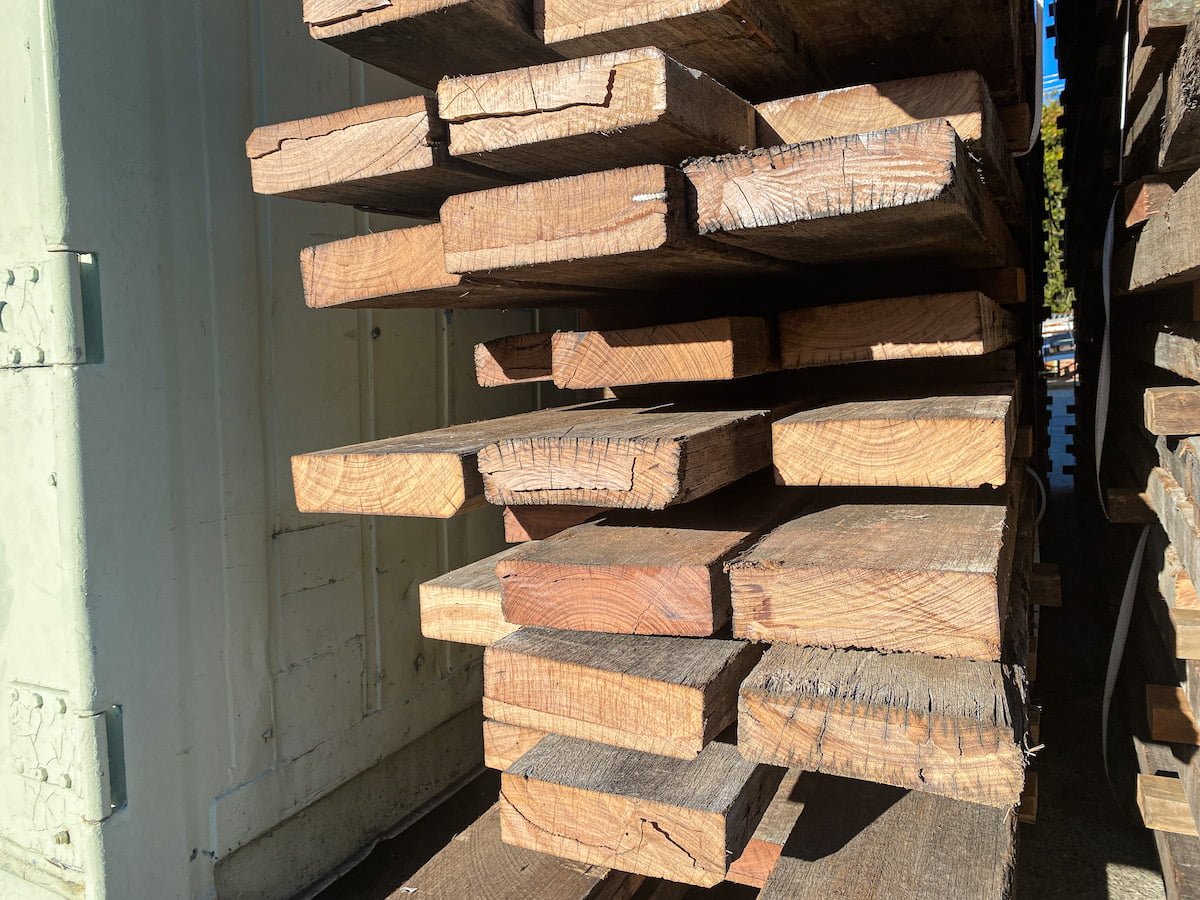
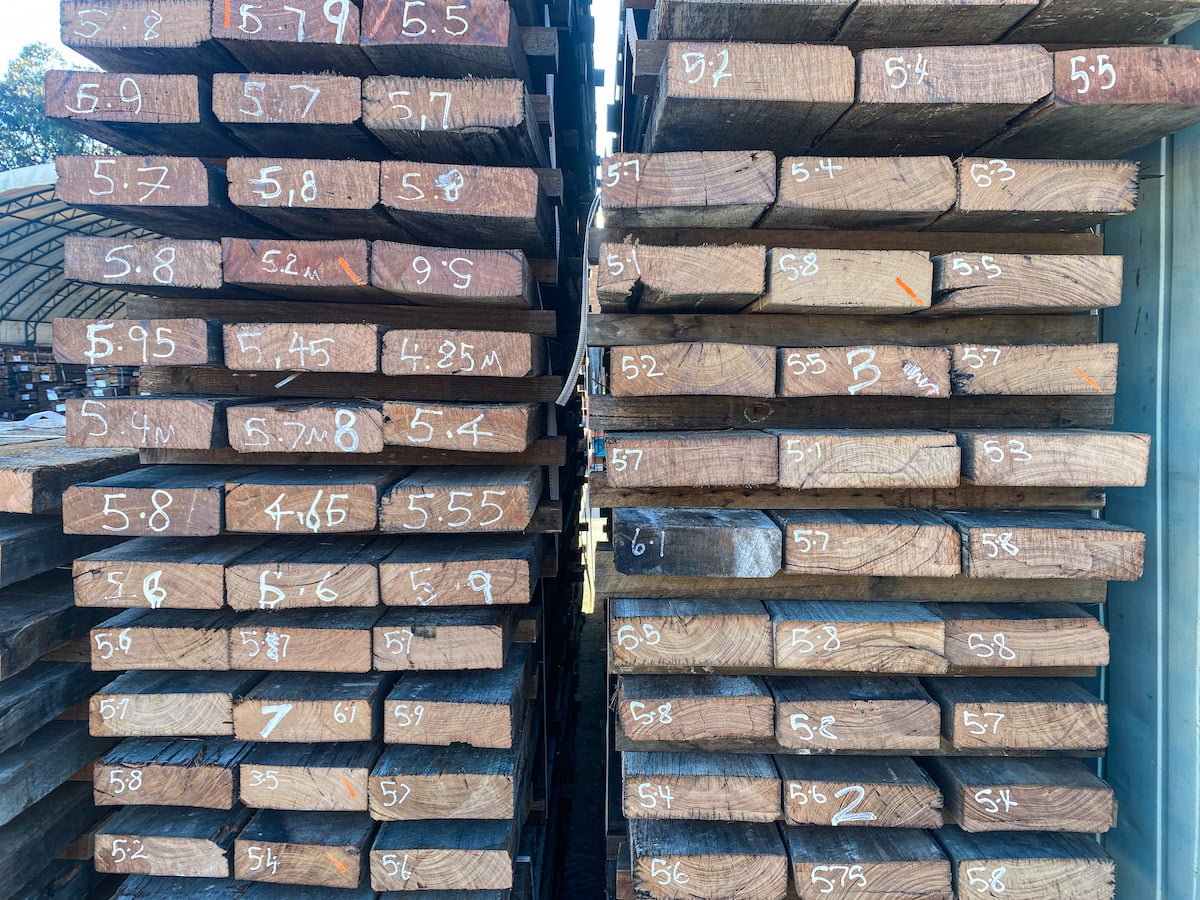
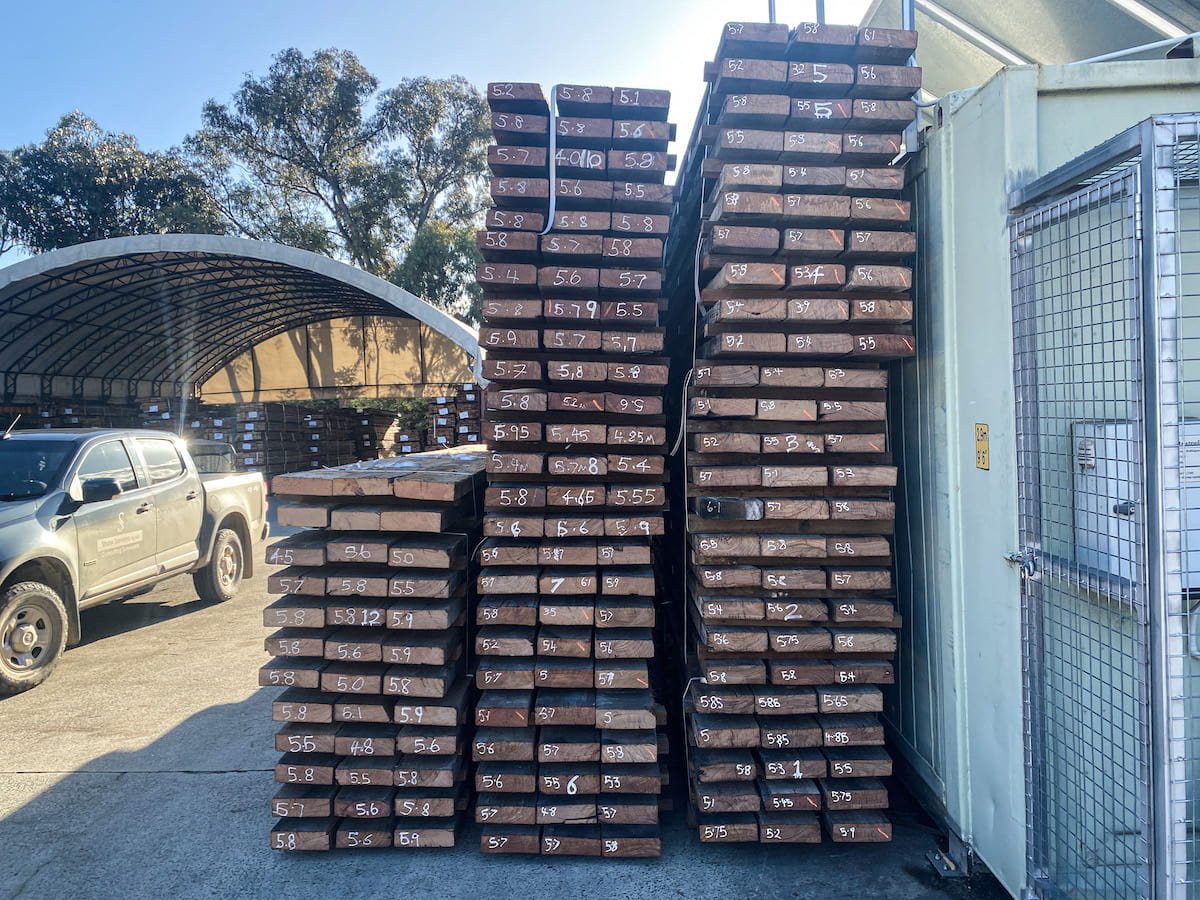
Interested in purchasing some of this unique timber?
WHAT CAN WE MAKE OUT OF THESE TIMBERS?
When it comes to turning the timber we salvaged from the Port Kembla Shed, the world is your oyster. With such a large volume and wide range of species, it could be turned into any of our products, from custom furniture to kitchen joinery like benchtops, or even outdoor applications like pergolas or outdoor bench seats.
But if you need a little bit of creative inspiration, here are a few ideas from our Design & Sales team:
1—Steel Hoop Leg Tables
Our Steel Hoop Leg Tables are renowned… our customers love the strength and simplicity of the design. They have a striking 60mm thick table top and a strong steel base that uses solid, flat bar steel for the hoop frames. The flat bar has nice square edges which gives the table a real architectural feel. The steel can be left raw, or polished and then powder coated for a perfect finish.
The 250x75mm and 200x75mm timber purlins from the Port Kembla shed are ideal sizes for a Steel Hoop Leg table top.
The Steel Hoop Leg Table is generally an inside table, so any of the timber species salvaged from Port Kembla will work great. It looks incredible in blackbutt or spotted gum so we’d love to make a table in one of those for someone!
2—Exposed ceiling beams
Exposed ceiling beams add something indescribable to a room, especially one with high ceilings—warmth, intrigue, rusticity.
The oregon timber we salvaged from the Port Kembla shed would make amazing exposed ceiling beams. It’s very fine-grained oregon, with growth rings as close as 0.7mm apart, which makes the timber both stunning and strong.
3—Large waterfall island benchtops
This Port Kembla timber would be perfect for a large waterfall island benchtop for someone’s kitchen, or even a commercial bar benchtop with waterfall features.
To achieve the waterfall effect on large benchtops, we need to work with really long pieces of timber so that there is continuous grain the whole way along, on both the horizontal and vertical sides of the benchtop.
These Port Kembla timbers are long, wide and thick, which ticks all of the boxes for this type of job.
Photos: The Thor’s Hammer team installing a massive waterfall kitchen island benchtop measuring 4.5 x 1.6m.
Port Kembla Shed Timbers Available Now
We custom design and make a huge range of furniture and joinery, and can turn around large architectural timber orders for new builds and renovations. Apart from the suggestions above, we can also see this timber being great for pergola beams, stair treads, large boardroom tables, or mantel shelves, but your imagination is the limit when it comes to the ways in which this timber might be used.
We’re excited to see what ends up getting made with this Port Kembla shed timber! It’s always extremely rewarding to work with historical timber, but the best part is when we make something for a customer who really appreciates the unique story of a particular piece of timber, and supports our mission to preserve its legacy.
If you have a special piece of furniture or joinery in mind, or perhaps you’re looking for a unique addition to your renovation, we’d love to hear from you.
As always with our timber, the supply is limited—once it’s gone, it’s gone—so get in touch ASAP if you’re interested in the Port Kembla timbers.
Fill out an enquiry form via the button below and we will be in touch soon for a chat.
Research & writing by Ellie Keft and Maria Larkins.
Photography by Rohan Thomson & Thor Diesendorf.
Historical imagery sources listed with each image.


